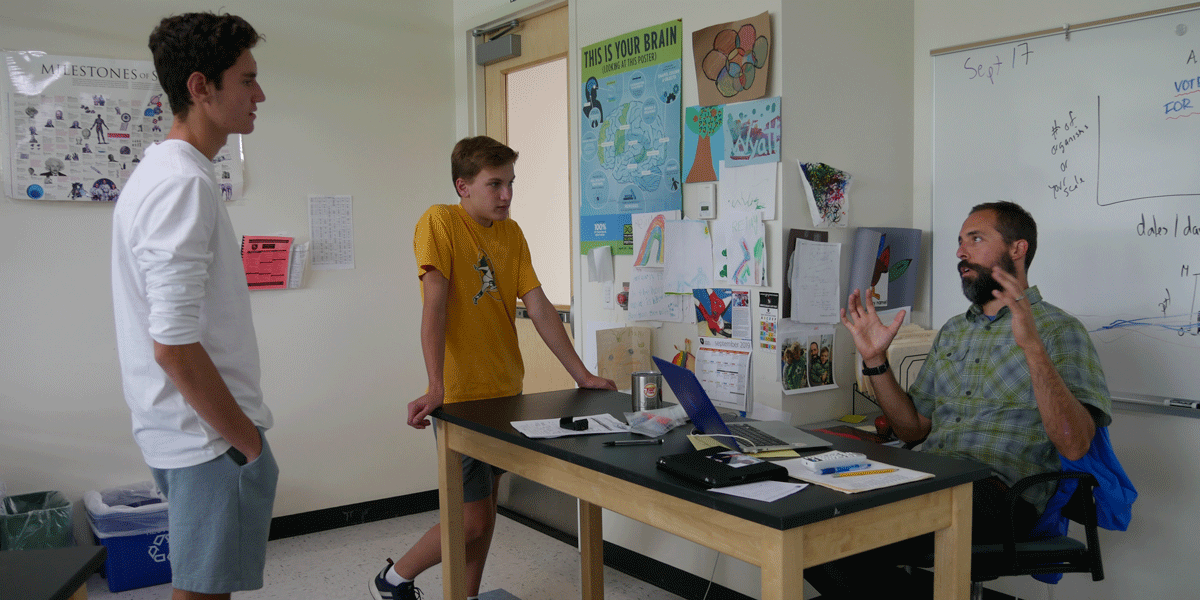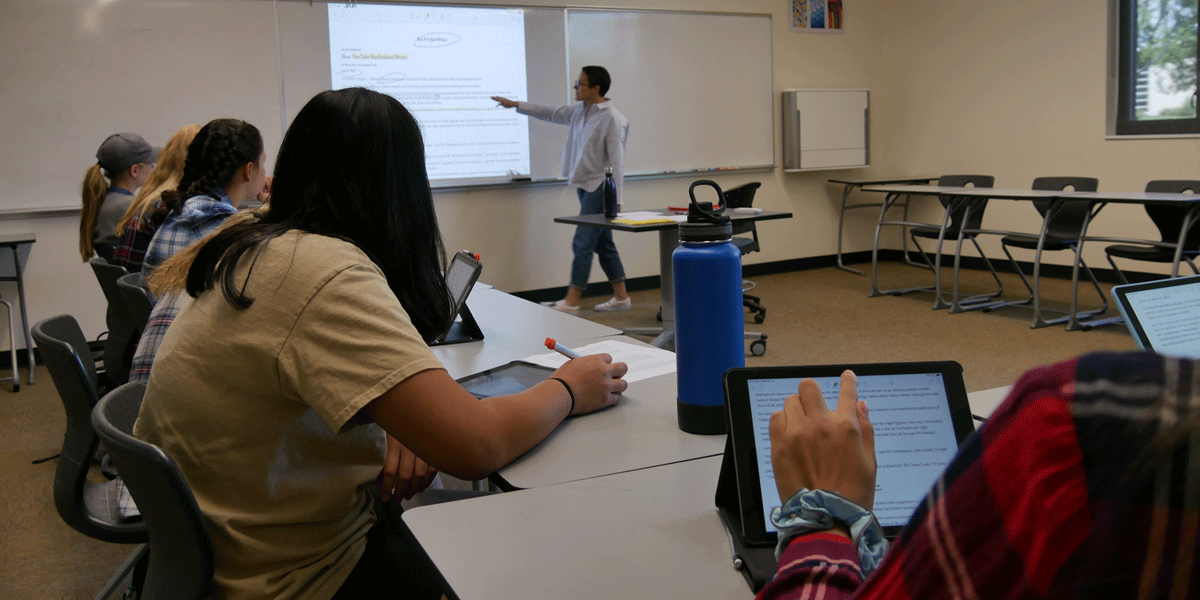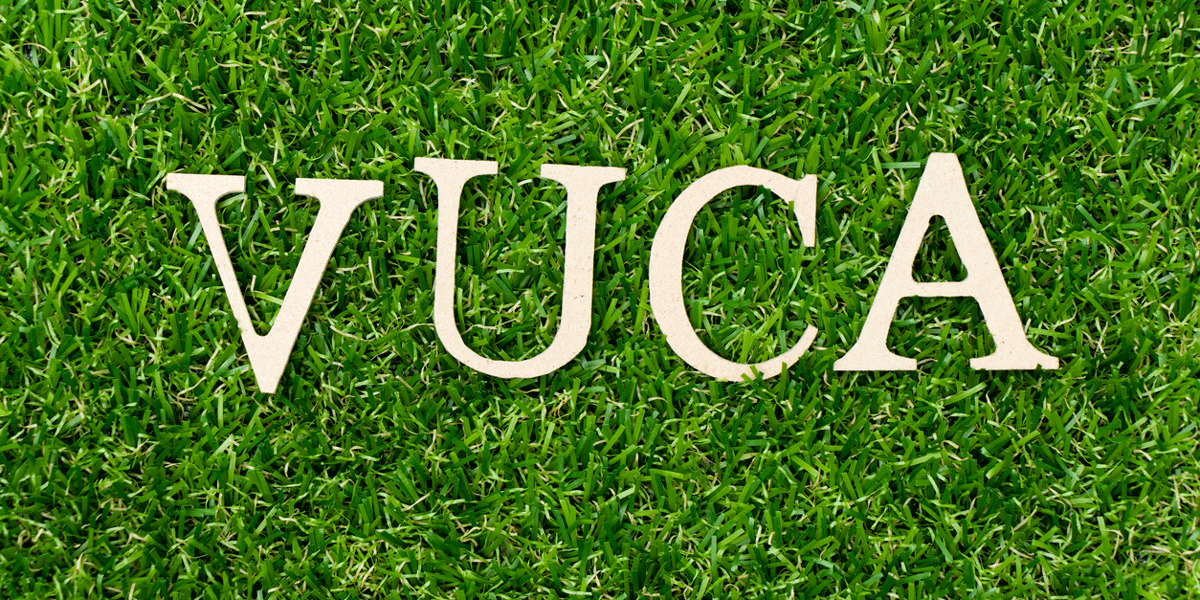Volatility, Uncertainty. Complexity. Ambiguity. Collectively gathered into the acronym VUCA, these four words have come to define our age. Introduced in the 1980s by leadership strategists, then adopted by the U.S. Army to describe post-Cold War geopolitics, the concept of VUCA has also found its way into educational settings. A simple Google search generates a long list of scholarly approaches to grappling with a VUCA world at both the secondary level and in higher ed.
How are we in Colorado Academy’s Upper School addressing this confusing, highly relativistic, reality? I believe we are addressing VUCA in two particular ways:
- We lean into VUCA directly. Our curriculum and teaching practices can address and reflect the world in which we live. We can actually take advantage of VUCA forces and try to harness them for our own use.
- We strive to resist the forces of VUCA. Rather than accept uncertainty, we can counter it with some core values and practices that we would deem as universal and VUCA-proof. For instance, if the confusion of the modern world is exacerbated by technology and ultimately limits human interaction, we make sure that we have ample opportunities for students to put away their technology, engage directly with each other and their teachers as humans, and seek to find ways to foster an unambiguously strong community.
Certainly, these two approaches would appear to be mutually exclusive, and perhaps they are. But I would also argue both strategies used equally and intentionally can complement each other quite nicely, helping our students (and teachers) meet the challenges of today’s world. There are times to be culturally immersed (embrace VUCA) and times to be countercultural (resist it). The question is when and how to employ both?

‘Immersed in VUCA’
Some actual examples will help illuminate this point. I spend a lot of time early in the year observing classes, noting student engagement and teacher practice. What I have observed in the past three or four years relates directly to how students and teachers are both combatting and embracing VUCA. For example, just last week I watched a biology class in which teacher David Frankel started with two minutes of mindfulness, then gave the students some direct instruction, and ultimately let them work independently in pairs or trios on a multi-part lab project that revolved around one of our most incredible campus resources, Woody’s Pond. What an incredible balance of the two strategies.
Mr. Frankel started with mindfulness, an intentional practice meant to reduce the anxiety we all face in everyday life and to combat the speed at which 21st century life moves. Mindfulness seeks to remind those who practice it “what’s important” and helps bring a sense of calm in a chaotic world. Next, Mr. Frankel practiced a traditional approach of walking students through exactly what was expected and how they could deliver on a lab report they were being asked to do. And then he set them loose into the highly unpredictable natural world. Their assignment was to record, observe, reflect. In short, they were immersed in VUCA.
Certainly, there were some controls and predictable aspects to this assignment, but all three biology teachers (Martha Smith and Dani Meyers also teach sections of the course) would fully admit they can neither be certain what the students will find, nor can they absolutely predict what the outcomes will be.
In fact, they were being intentionally experimental about the whole assignment, reflecting another value our teachers now fully embrace in a VUCA world: sometimes you just have to try something out and see how it goes. Whether the end result is a huge success, a total flop, or something in between, something important will be learned in any event. We acknowledge that the process is every bit as important as the product or outcome. That’s VUCA acceptance and management.

‘The best aspects of VUCA’
Elsewhere I saw teacher Erin Cantos leading a fascinating discussion with her Ninth Graders in Global Perspectives. That core course looks at contemporary events, frequently moving back in history to better understand why an issue exists now. On the day I observed, she was helping students understand the current tension between a globalist and nationalist view of the world. She had supporting articles and videos, all of which were designed to help students understand the complexity of the topic and to see the spectrum of ideas about each. Of course, guiding our students to become more enlightened citizens is crucial to their better understanding the many VUCA issues that exist in the world today and will continue to be there when they enter adulthood.
I also observed two math classes in which the teaching methodology was new, progressive, and clearly informed by best educational practices. Austin Harvey’s AP Statistics class and the non-AP Calculus course co-taught by Erin Gray and Peter Horsch both exhibited the intentionality of teachers leaning into and taking advantage of the best aspects of VUCA. Today’s math classes emphasize student practice over teacher instruction, allowing the students to explore and discover with teachers as guides or coaches. Again, the teachers released some control over their environment, not to sow the seeds of chaos, but to help students understand that a messy discovery process in math is absolutely vital to developing critical-thinking and problem-solving skills.
Volatility, Uncertainty. Complexity. Ambiguity. Do these words generate immediate anxiety, or are they simply a way of seeing the world as it is? Either way, educators must acknowledge that we live in a highly complex world. Colorado Academy is meeting that challenge—with all its limitations and opportunities—head on.
